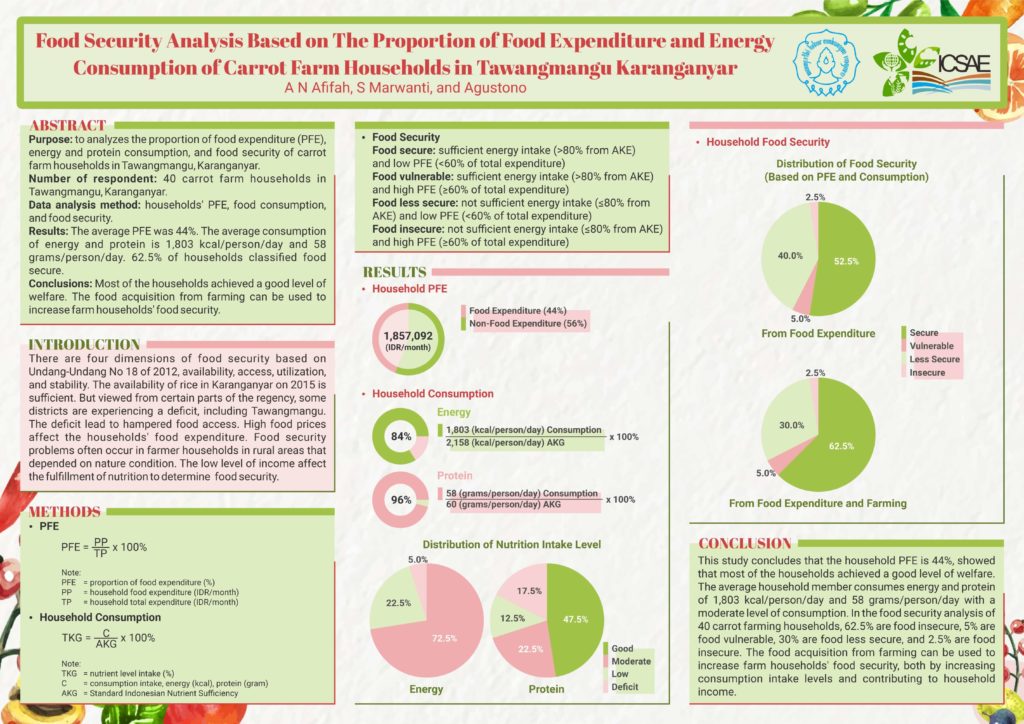Paper ID: 78
Food Security Analysis Based on The Proportion of Food Expenditure and Energy Consumption of Carrot Farm Households in Tawangmangu Karanganyar
A N Afifah, S Marwanti and Agustono
Department of Agribusiness, Faculty of Agriculture, Universitas Sebelas Maret
Email: aufaafifah@student.uns.ac.id
Food security is reflected in two indicators, the level of energy intake and the proportion of household food expenditure (PFE). In 2015, the Tawangmangu sub-district in Karanganyar, Central Java, experienced a rice deficit, causing rice prices to hinder food access. It affects the food expenditures of carrot farm households in the Tawangmangu sub-district. The income of carrot farmers, which is highly unpredictable, affects nutrition’s fulfillment to determine food security. This study analyzes PFE, energy and protein consumption, and food security of carrot farm households in Tawangmangu, Karanganyar. The number of respondents in this study was 40 carrot farm households, and the sampling method used the accidental sampling technique. The data analysis method in this study used household income and expenditures, PFE, food consumption, and food security. The results showed that the average PFE of the household was 46%. The average consumption of energy and protein is 1.718 kcal/person/day and 56 grams/person/day with 80% level energy intake and 94% protein intake. The distribution of household food security conditions are 52,2% food secure; 5% food vulnerable; 40% food less secure; and 2,5% are food insecure.
